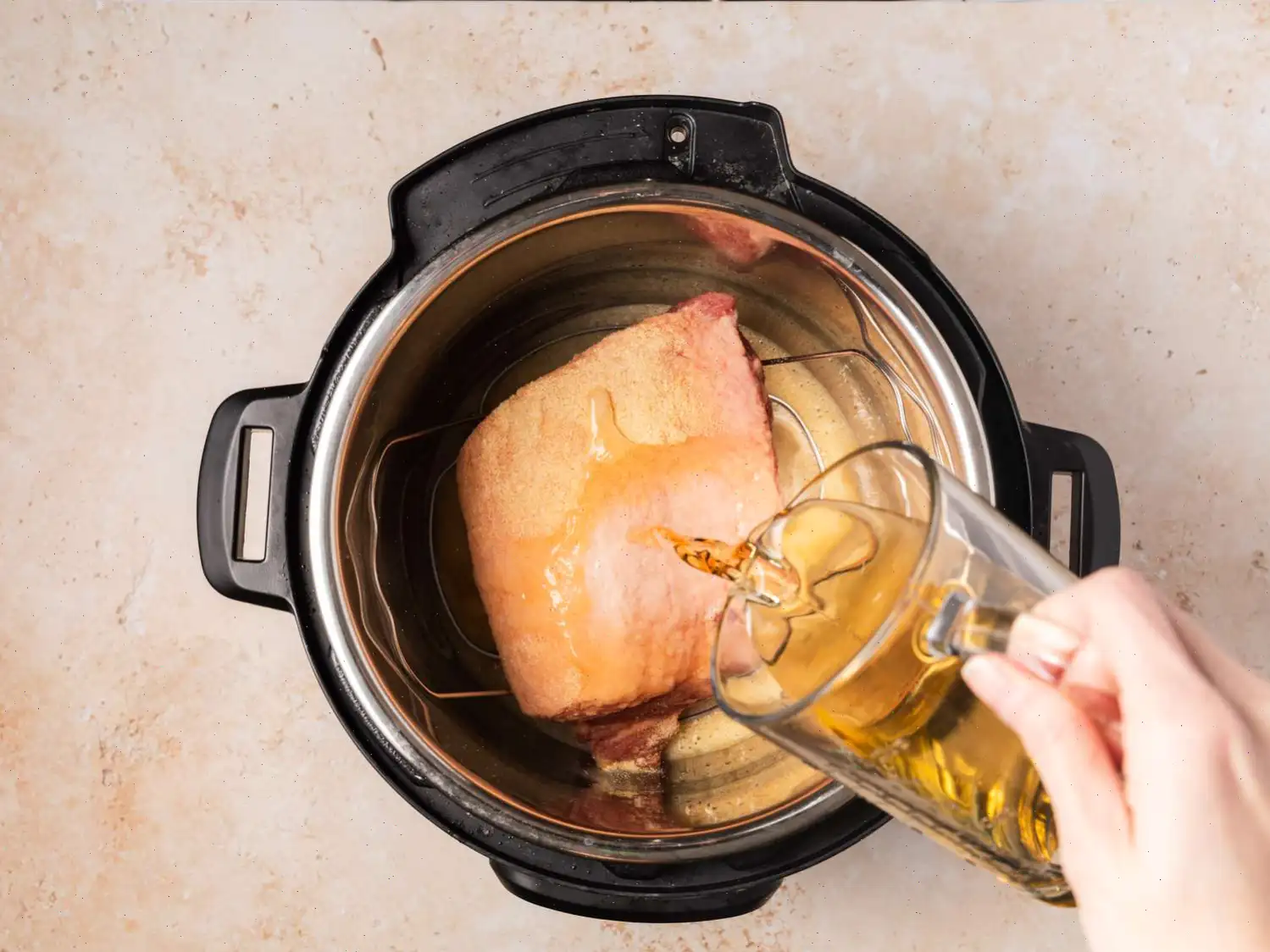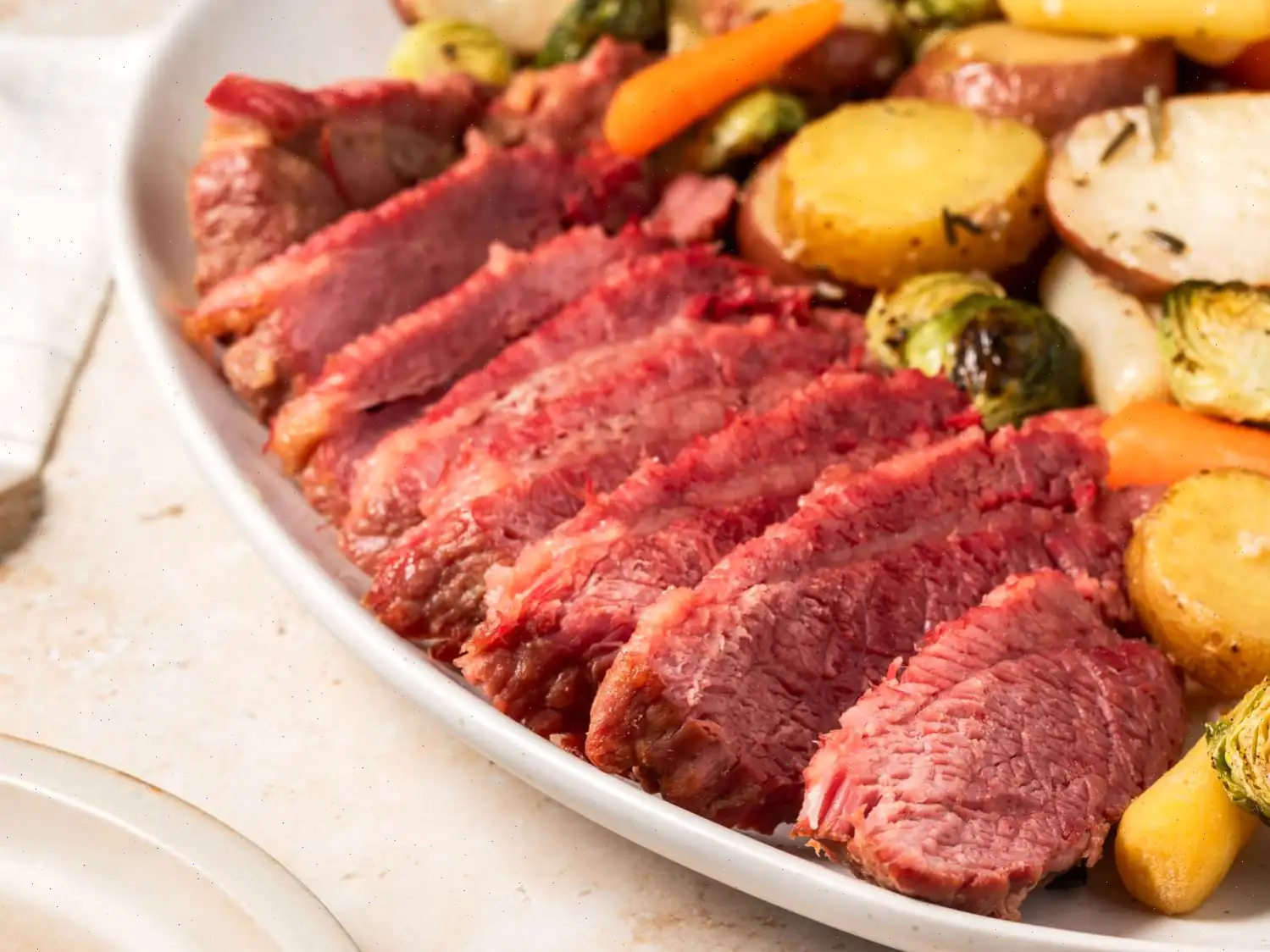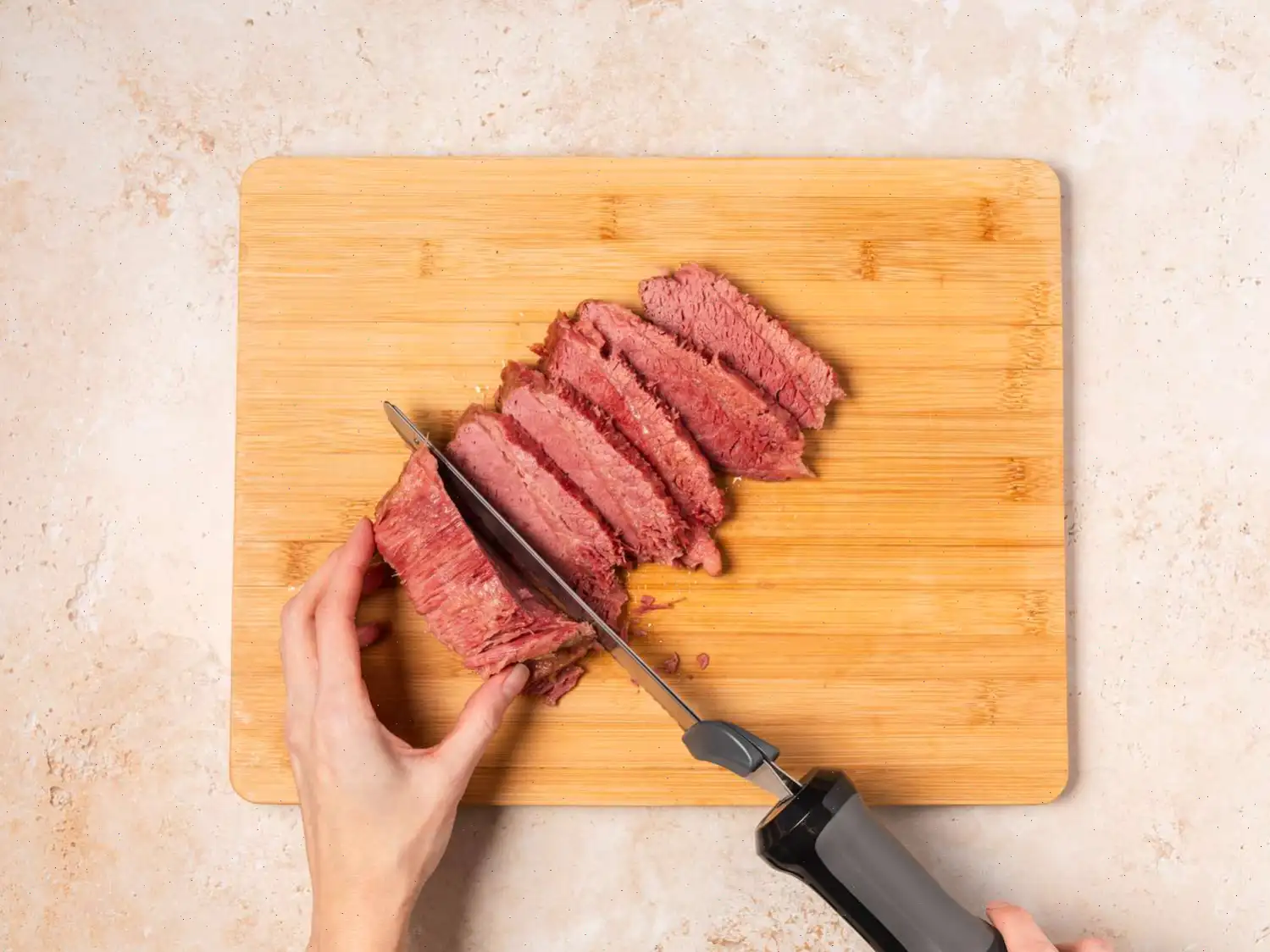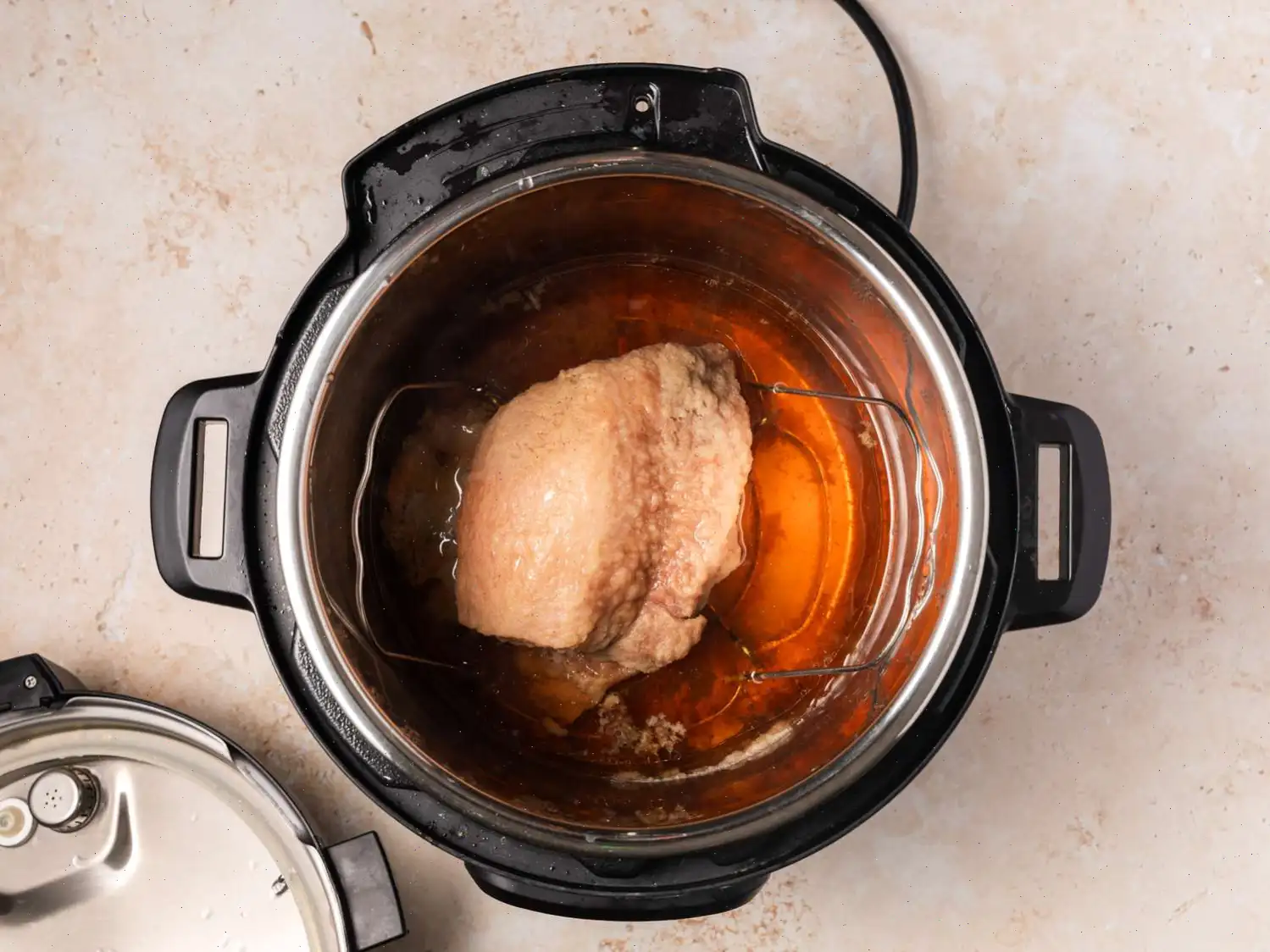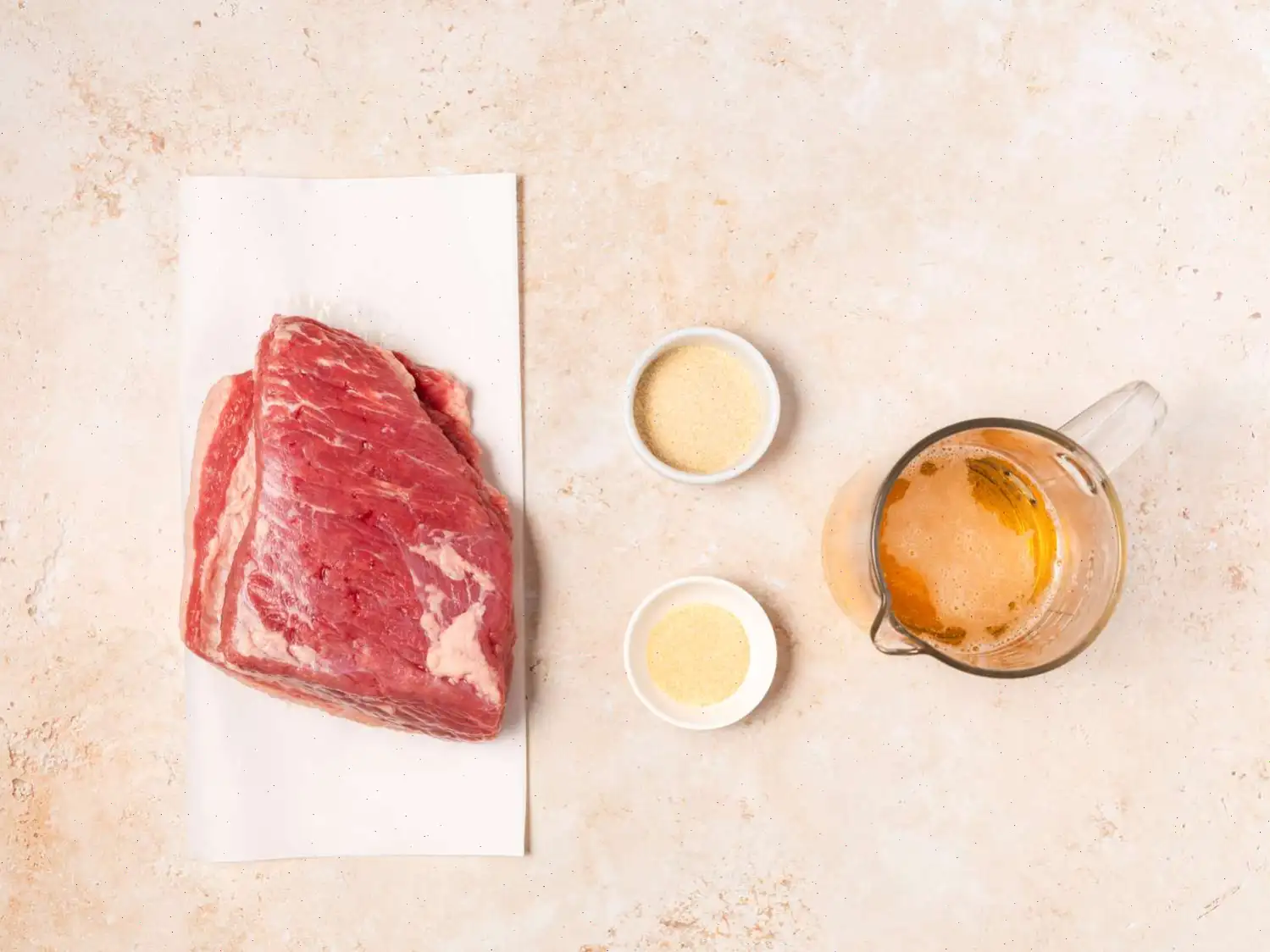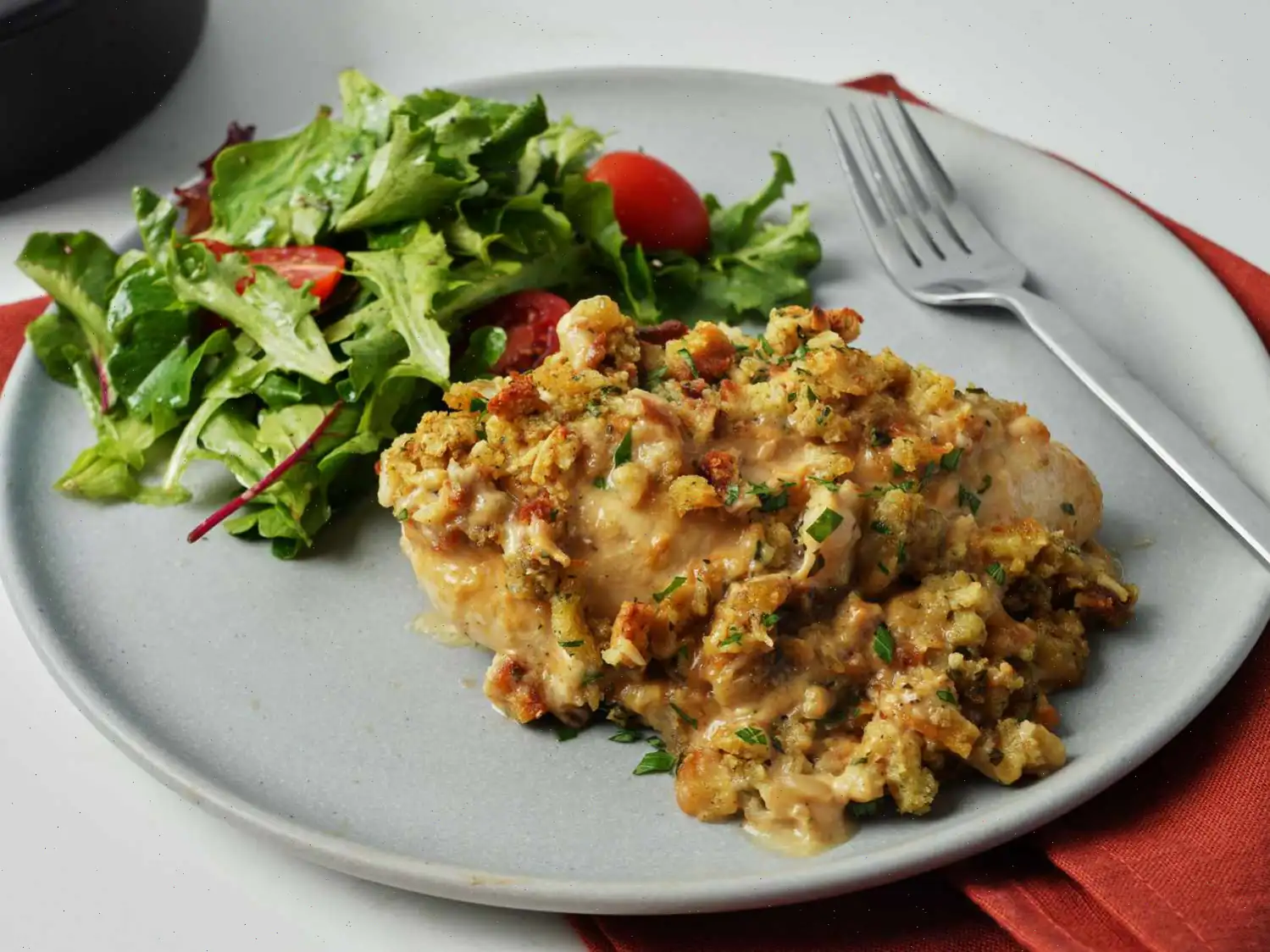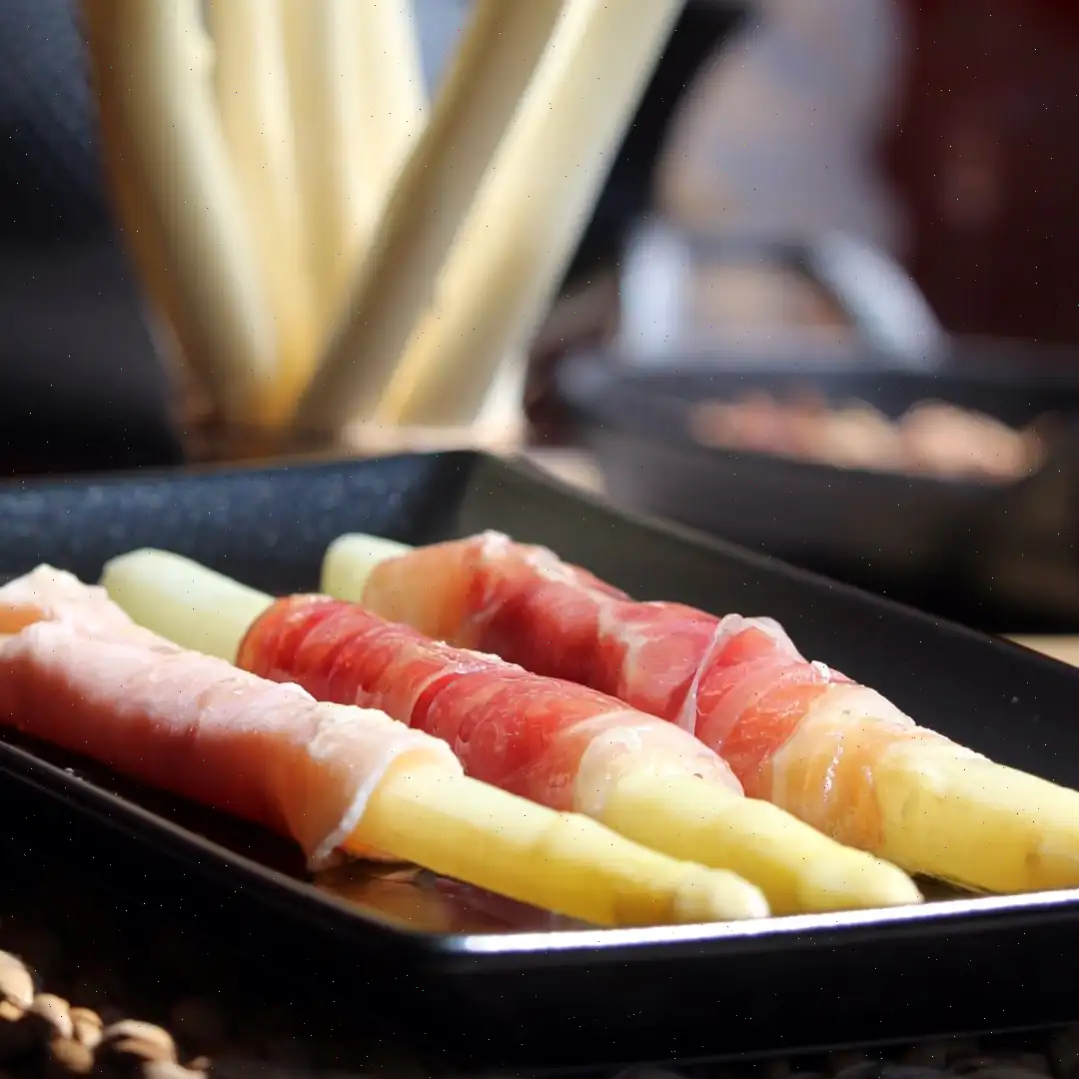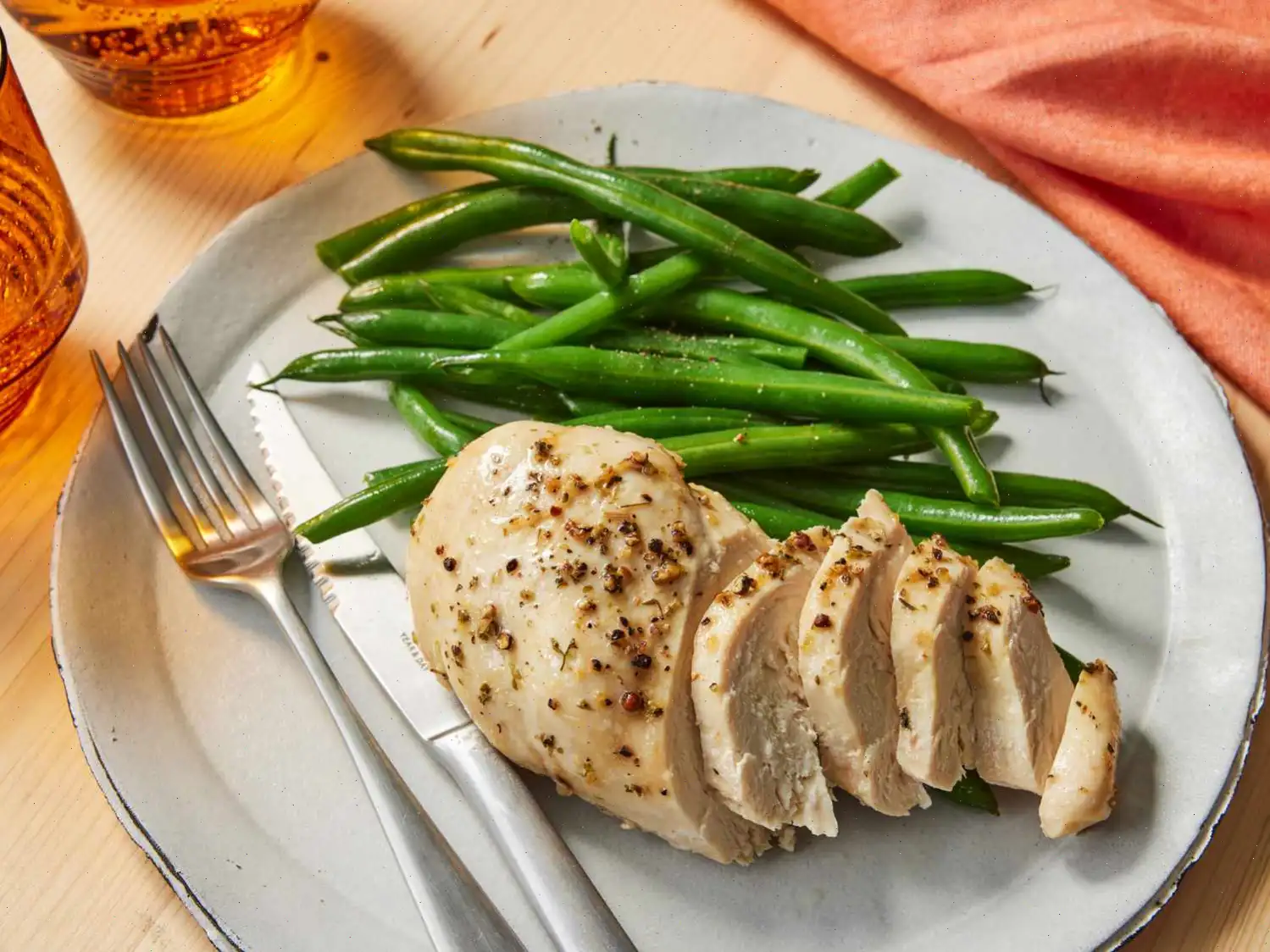
Pressure Cooker Corned Beef Recipe
Ingredients
- 1 (4-pound) corned beef brisket, seasoning packet discarded
- 1 teaspoons garlic powder
- 1 teaspoons onion powder
- 1 (12 ounce) bottle beer
Directions
Step 1: Gather all ingredients.
Step 2: Place the brisket fat-side up on a rack inside an electric pressure cooker.
Step 3: Sprinkle garlic powder and onion powder over the brisket.
Step 4: Pour the beer into the pot.
Step 5: Close and lock the lid of the pressure cooker.
Step 6: Select the "Meat" setting according to the manufacturer's instructions, and set the timer for 1 hour 30 minutes.
Step 7: Allow 10 to 15 minutes for the pressure to build up.
Step 8: Once the cooking time is complete, release the pressure using the natural-release method according to the manufacturer's instructions. This will take approximately 10 to 40 minutes.
Step 9: After releasing the pressure, unlock and remove the lid.
Step 10: Transfer the brisket to a cutting board. Remove the top layer of fat and slice the meat across the grain.
Cooks Note
I like to slice the cooked brisket with an electric knife for beautifully even slices of meat.
Nutrition Facts (per serving)
| Nutrition | Amount | % Daily Value* |
|---|---|---|
| Calories | 222 | 11% |
| Total Fat | 15g | 20% |
| Saturated Fat | 5g | 26% |
| Cholesterol | 80mg | 27% |
| Sodium | 923mg | 40% |
| Total Carbohydrates | 2g | 1% |
| Dietary Fiber | 0g | 0% |
| Total Sugars | 0g | 0% |
| Protein | 15g | 30% |
| Vitamin C | 0mg | 0% |
| Calcium | 9mg | 1% |
| Iron | 2mg | 8% |
| Potassium | 135mg | 3% |
* Percent Daily Values are based on a 2,000 calorie diet. Your daily values may be higher or lower depending on your calorie needs.
Note: Nutrient information is not available for all ingredients. Amounts are based on available nutrient data. If you are following a medically restrictive diet, please consult your doctor or registered dietitian before preparing this recipe for personal consumption.
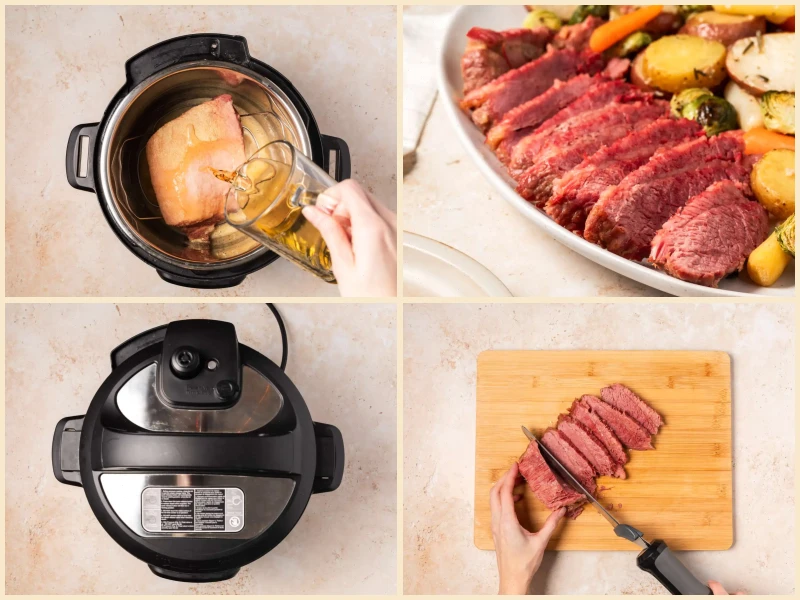

History of Corned Beef
Corned beef is a dish that has its origins in the British Isles, particularly in Ireland. The term "corned" comes from the use of large grains or "corns" of salt used in the curing process. The dish became associated with Ireland due to its popularity among Irish immigrants in the United States, especially in the 19th and early 20th centuries. Traditionally, corned beef was paired with cabbage and consumed during St. Patricks Day celebrations. The dish itself is a result of a long history of salt-curing meats, a technique developed to preserve meat before refrigeration was available.
Regional Variations
While corned beef is most commonly associated with Irish cuisine, it is also popular in other regions. In the United States, particularly in the Northeast, corned beef is often enjoyed as a part of a traditional St. Patricks Day meal. In New York, the dish is famously served as a deli sandwich, with slices of corned beef piled high on rye bread. In the Caribbean, corned beef is a key ingredient in stews and curries, often paired with rice and beans. Each region adds its unique touch, such as using different spices or cooking methods like pressure cooking, which has made the preparation faster and more convenient while retaining the rich flavors.
Distinction from Similar Dishes
Corned beef is often confused with other similar beef dishes, such as pastrami or brisket. The primary difference between corned beef and pastrami lies in the preparation: corned beef is cured in a brine, while pastrami is typically smoked and seasoned with additional spices. Moreover, corned beef is commonly made from the brisket cut, which is seasoned and boiled or simmered, whereas pastrami is often made from the same cut but is smoked and sometimes steamed after curing. Unlike brisket, which can be cooked in various ways (like roasting or grilling), corned beef is known for its salt-cured, brined method that imparts its distinctive flavor.
Where Its Typically Served
Corned beef is commonly served in both home kitchens and restaurants. It is especially popular in American homes during St. Patricks Day celebrations, where it is paired with boiled potatoes, carrots, and cabbage. In delis, particularly in the United States, corned beef is often found in sandwiches, such as the famous Reuben, which includes Swiss cheese, sauerkraut, and Russian dressing on rye bread. In Ireland, corned beef was once a dish for the wealthy, but today it is more commonly found as a simple comfort food. It is also served in many pubs worldwide, particularly in dishes that emphasize hearty, filling meals.
Interesting Facts
1. The name "corned beef" comes from the "corns" of salt used to cure the meat, not from the grain corn.
2. Despite its strong association with Ireland, corned beef was not originally a staple in Irish cuisine; it was more popular in the Irish-American community.
3. Pressure cooking corned beef significantly reduces cooking time, making it a convenient and quick way to enjoy this traditional dish. The method ensures that the meat is tender and flavorful, with a juicy texture thats perfect for slicing.
4. Corned beef can be used in a variety of dishes beyond the classic St. Patrick's Day meal, including hash, sandwiches, and even as a topping for salads or in stews.
In conclusion, this Pressure Cooker Corned Beef recipe is a modern twist on a traditional Irish dish, offering a faster, yet equally delicious, version that can be enjoyed throughout the year, not just during festive occasions.
FAQ about Pressure Cooker Corned Beef Recipe
Comments
Jason Wilson
01/10/2024 04:58:07 AM
I cooked with a stovetop pressure cooker for 50 minutes on high heat. I included the spice packet, fresh garlic, and onion. In the future, I will skip the beer.
Amanda White
09/26/2022 05:18:15 PM
First time trying out my new Instant Pot and I was impressed! The meat turned out incredibly juicy and tender. I wasn't a huge fan of the onion and garlic powder, as I prefer a more traditional corned beef flavor. Next time, I'll stick to using the included spice pack and skip the other seasonings. The addition of beer, however, was a pleasant surprise and added a nice touch to the dish.
Thomas Cruz
11/10/2023 08:22:30 PM
I stuck to the recipe precisely and I'm amazed at how delicious the outcome was, considering the limited ingredients used. Using my Instant Pot made the process quick and effortless.


